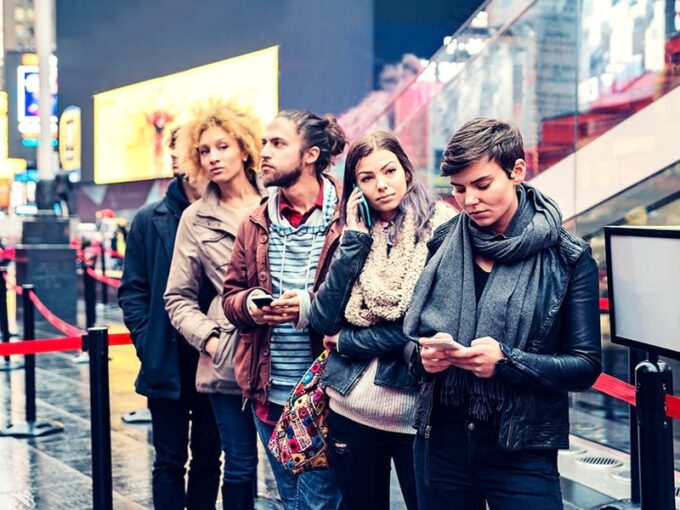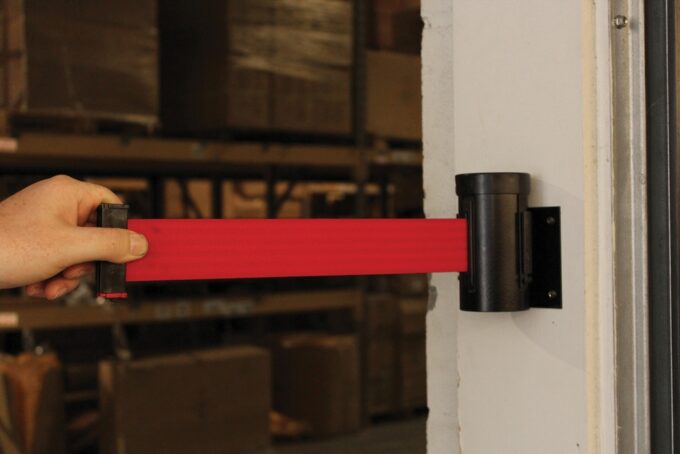Thousands of students mainly characterize universities, all moving around simultaneously. Everyone always seems to be in a hurry to get to someplace, and with such a huge population, it is important to come up with the ideal way of controlling their movements. By developing a good organizational and planning structure, a university can run better and efficiently. It will eliminate most of the time wasted due to inconveniences caused by poor planning and crowd control. A university’s organizational structure is very complex. It features different classes, all scheduled and run by different professors, in different campus parts. There are also various departmental hierarchies, with different teachers in different departments, all located in different institutions. Another aspect of the university that is bound to create huge crowds is the sporting activities. Universities usually have a wide variety of sporting activities, and this means teams are usually many. Thus, there are numerous reasons why a university needs to have proper crowd control and queue management system that will ensure all these activities run concurrently and smoothly.
The different sections of the campus all need specific crowd control methods that are tailored specifically for them. The methods used in the cafeterias are not the same as those used in the classrooms. They all differ, and it is important to learn how to work them well to ensure the institution’s smooth running. Professionals such as CrowdControlCompany can help you determine what type of crowd control solutions you need, these could range from retractable belt barriers to barricades and beyond.
This post will walk you through various key aspects of crowd control in universities. These are the main aspects we will look into.
- Why invisible crowd control options are the best for campuses.
- How to determine the various parts of the institution that need to have crowd control mechanisms.
- The three areas must have a crowd control and queue management system in the university.
Invisible crowd control solutions and how they work

Source: pexels.com
To have a successful crowd control plan, you have to make use of people’s daily intuitions to achieve a seamless and cost-effective crowd control mechanism. The best system that works efficiently and effectively is one that the people are not even aware of. Studies have shown that campus students rarely like being told what to do. They all want to make independent choices that don’t seem to be influenced, and those that don’t seem to be following a “mob.” Students pay for the facilities, which gives them an entitlement to all the features it has to offer. By forcing them into a certain way, then it is bound to hit the wall.
The best solution for this is invisible crowd control mechanisms. Some of the best invisible crowd control and queue management items include jersey barriers, retractable belt carriers, and even signs. People have become accustomed to following their instructions without a second thought. These mechanisms are also very hard to miss as people are often on the lookout for directions and how to proceed. Although they are visible to people, they can easily blend into the specific environment’s general appearance, thus ensuring elegance is maintained. Unlike a traffic police officer who is easy to notice, costs more, and can often get exhausted, these tools offer the best and most reliable alternative.
By investing in invisible crowd control, you can direct students, professors, and support staff simultaneously while still keeping the running costs very low. This is a long-term solution that is very reliable.
Signs, the best invisible crowd control system

Source: pexels.com
If you are looking for a dependable crowd control system, signs are the way to go. They are not only cheap and durable but will also save you a lot of money as you continue with campus operations. When signs are placed strategically in the right places, they give people the necessary directions and ensure the information is passed clearly and concisely. They are also elevated to ensure users can see them from a long way off, thus allowing them to make the necessary changes in their movement and direction. They also work very well in emergencies. In case of a fire, you don’t need someone to endanger their lives while directing others on where to assemble. With a proper sign, people plan their movements well, and this improves safety.
Signs have been reliable invisible crowd control systems in a wide range of places and not universities alone. One of the biggest beneficiaries of their efficiency are places that don’t require any noise, such as movie theatres and libraries. As soon as you enter into one of these places, you already know where to sit, where different amenities are, and the exit. This is all done using signs, thus ensuring the serene nature of these places is maintained.
This system can also be duplicated on campuses. It can start with simple signs such as those directing people to various school parts, such as the fields, lecture halls, and restrooms. This can slowly be advanced to more complex and targeted signs such as those on equipment in the campus labs, how to handle different tools around campus, and even safety procedures in emergencies such as fires and other situations. This will result in a safer and more organized campus, thus improving the efficiency of different activities. By using signs, the campus can ensure students, especially those new to the institution, have an easy time moving around, which will save everyone a lot of time.
Defining Your Campus Layout by Crowd Control Solutions
Planning beforehand

Source: pexels.com
A campus is a very complex organization and requires a very sophisticated crowd control and queue management system. The institution comprises many other sections such as dorms, libraries, the quad, labs, lecture halls, and many other places, all of which experience huge volumes of people every day. Since these places all serve different purposes, they need to have a crowd control system specifically tailored for them. To come up with a system that works well for these places, it is first important to consider their different aspects and note them down. Making a list of the various places and the various crowd control mechanisms you can use will ensure you make better decisions.
A good example of how to evaluate these is;
The first step is to identify the exact place you intend to conduct the queue management system. A good example of a campus spot characterized by huge crowds and rowdy fans is the campus football stadium. A list of these places should be classified according to the various spots within the stadium. Here is an example of a list;
Entrances, Ticket lines, and Concession stands (Queue management)

Source: safetysticklers.com
This is one of the most active parts of the football stadium as everyone wants to get their tickets for the game. The entrance can also get quite disorderly as everyone tries to come in all at once. The hype of campus football games is usually high, and it is thus important to control these crowds well. Some of the tools that can be used include;
- Stanchions
- Stanchion sign frame
- Stanchion rope
- Stanchion storage carts
On-the-field (Crowd control)
Once the games begin, everyone wants to be as close as possible to the action. Thus, an event barricade rentals company Dallas comes into play as it is important to control these crowds to ensure they don’t get into the field and disrupt the game. Various mechanisms can be employed here;
- Barricade storage carts
- Barricades
- Barricade covers
Parking lot (Traffic control)

Source: pexels.com
Campus football games often attract fans from many parts of the state, especially students and school alumni. With such a huge number of fans, traffic can be a nightmare. It can easily become impossible to get into the parking lot or leave once the game is over. Having the right traffic control mechanism will prevent all these inconveniences. Some of the tools that can be used here include;
- Speed bumps
- Delineators
- Ground protection
- Jersey barriers
- Traffic barricades
By noting everything down like this, you can easily monitor the situation and have it all under control. You will also assign your workforce accordingly to places bound to become more hectic as per your list. This is a smart step towards better-managing crowds and queues.
The 3 Most Common Campus Crowd Control Zones
Different parts of campus often experience a higher than normal traffic level. It is thus important to know how to control these crowds effectively.
These areas are;
- Concession stands, Administrative buildings, cafes, and bookstores
- Events and athletic facilities
- The parking lots
1. Concession stands, Administrative buildings, cafes, and bookstores

Source: safetysticklers.com
These are some of the vital places in the smooth running of an institution. They need very close attention to detail to ensure human traffic is well managed. There are various ways through which this can be achieved. The most successful tried and tested method is;
Retractable belt barriers
That is because retractable belt boundaries are the most financially savvy answer for coordinating human traffic on campus grounds. Selecting the correct belt obstructions to manage your campus students, staff, and grounds guests is a critical choice as you’re planning various regions of grounds. There are various types of barriers, all designed to cater to different needs.
The measure of traffic the belt-hindrances should withstand, where they’re found, and how much territory they’ll have to cover should all be considered when you’re figuring out what sort of belt-obstruction to buy. It’s ideal for designing out the format of your lines before purchasing retractable belt hindrances. As a result of their effectiveness and versatility, the vast majority use lines the board applications to do this. With the privilege application, you can make an advanced format of your library/cafeteria/and so forth and practically design your obstructions to gauge the number of you’ll require.
Quicknote: Although these retractable belts can be expensive initially, they will ensure you get the best cost-saving plan in the long run. They are tough to withstand the environmental conditions year-round. They are also reliable as they can be moved from one area on campus to another.
2. Events and Athletic Facilities

Source: accuform.com
Athletic events on campus witness some of the highest levels of traffic. Numerous features characterize these events, and there are also many stations within them. These include concession stands, cafeterias, apparel stores, museums, and many more. All these need a unique form of crowd control mechanism. Here are some of the most reliable to use;
-
Stanchions and belt barriers
Stanchions are important as they direct the huge crowds on the different paths, they should take to get around the sports facility. This ensures order and a seamlessly moving crowd. On the other hand, Belt barriers restrict the students only to allowed areas, thus ensuring there is no crowding or accessing restricted places.
-
Signs
These are usually a great and easy way to guide people around. They are easy to understand, and the messages on them are very short, thus allowing you to read them while on the go. They are usually visible enough from far, thus allowing you to adjust your movements accordingly. Signs will help prevent people from crowding at entrances or exits and make it easy for people who have never been there before to navigate easily. This prevents constant misunderstandings and inconveniences resulting from always asking for directions.
-
Wall-mounted retractable belt barriers
These are mostly used for places such as the ticketing area and the cafeteria. Since these are places already designated for this specific task, having a permanent belt barrier will ensure human traffic is always controlled. These barriers are durable and guarantee you a long period of efficient service delivery.
Parking lots
Every campus has a parking lot that caters to everyone who steps through their gates. They serve students, professors, and support staff and are bound to experience huge human traffic. By having a proper traffic control mechanism, the cars will move smoothly, and the chances of an accident are reduced. There are various ways to control traffic in the parking lots;
- Installing speed bumps. They will ensure motorists observe the set speed limits while at school, thus reducing the likelihood of getting hit. It will also keep them alert as they drive.
- Setting up barriers where necessary. These will guide drivers on the places they are supposed to go to, thus ensuring a smooth and integrated human and vehicle movement.
- Placing traffic signs strategically across the parking lot.
- Setting up traffic cones. These will dictate to the drivers the various restricted areas, thus ensuring they remain on the driving roads.
By effectively controlling crowds and managing queues well on campus, you can achieve more.







